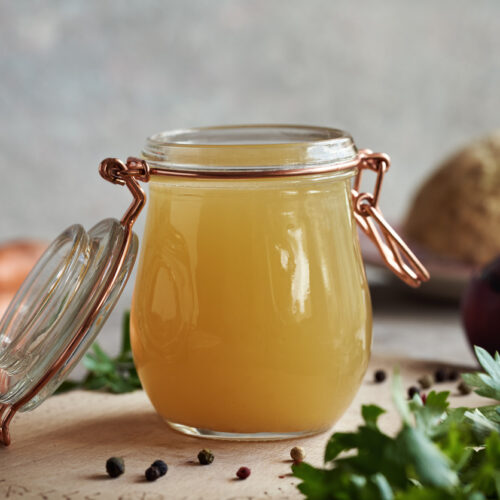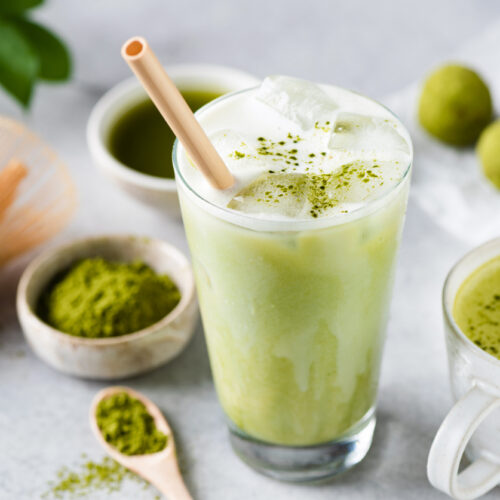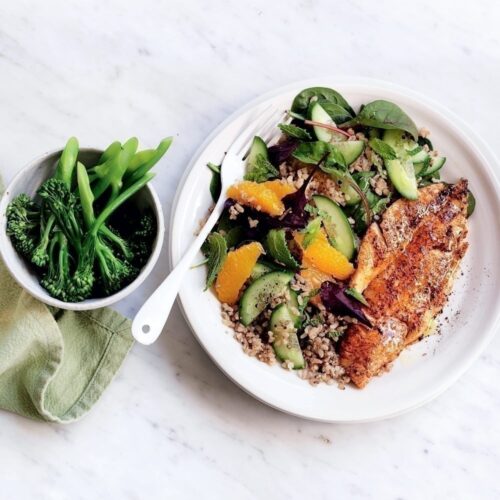
Inflammation is a buzzword right now and its shadowy presence is being held responsible for a raft of diseases. But what does that really mean? And can we do anything about it? Senior nutritionist Rose Carr investigates.
Broadly speaking, inflammation is the immune system’s response to stimuli that are perceived to be harmful to the body. There are distinct types of inflammation, acute and chronic.
When inflammation is good
Acute inflammation is our cells responding to an attack. It’s not specific, so the same basic response will be given to cuts, burns, radiation or bacterial or viral invasion.
When I accidentally stabbed my finger with a rusty nail in the garden the cells nearby (in the finger, that is — not at the neighbours’) responded by causing redness, pain, heat and swelling — four typical signs of acute inflammation. While I wasn’t so chirpy about it at the time and despite the throbbing pain, this was all good. Extra blood was flowing to the area to provide antibodies, clotting proteins and specialist cells to ingest and dispose of any toxic microbes they could find. The damaged tissue was basically being isolated and readied for repair. I don’t think there was pus in the aftermath of this particular incident, but pus is just a collection of dead cells being expunged from the inflammation site. Isn’t that clever?
Acute inflammation can last for a few hours or a few days. It needs constant stimulus to keep going. So once the rusty nail and any toxins are removed, or all the bacteria are eliminated, the inflammation calms down and goes away. Its job is done.
The dark side of inflammation
Chronic, or ongoing, inflammation is a different story, and not so welcome.
High-grade chronic inflammation
People with rheumatoid arthritis, inflammatory bowel diseases (such as ulcerative colitis and Crohn’s disease), asthma and psoriasis experience high-grade chronic inflammation in their joints, intestine lining, lungs and skin respectively. Not only do they have a large number of specific compounds that promote inflammation at those areas, the compounds are also in their circulation at higher amounts than usual, so they could also have inflammation elsewhere in the body.
Unlike acute inflammation, this is not helpful. These inflammatory diseases are caused by a combination of genetic and environmental factors: to have the disease you must have the genes to start with, and then you need to be exposed to specific environmental factors that push play on those genes. Inflammatory diseases are often treated with anti-inflammatories, although success varies.
Low-grade chronic inflammation
Low-grade chronic inflammation is associated with a number of conditions, including cardiovascular and Alzheimer’s disease, age-related macular degeneration, insulin resistance and type 2 diabetes. There is also some evidence that inflammation could be involved in depression and bipolar disorder, but it’s not as conclusive.
Low-grade chronic inflammation, sometimes called systemic inflammation, is where compounds associated with inflammation are found in the bloodstream at higher or lower levels than normal.
Commonly measured compounds used as markers for chronic inflammation when at elevated levels include C-reactive protein (CRP), interlueken-6 (IL-6) and tumour necrosis factor alpha (TNF-a), while adiponectin is a marker when at lower levels.
Am I at risk?
While genetics and environmental factors are also at play in low-grade chronic inflammation, other factors include being overweight, especially around the middle, smoking, poor diet, low physical fitness and increasing age. We can’t do much about the age thing, but we can influence the others.
It’s also been shown that stress can promote inflammation. It’s well established that chronic stress is a major risk factor for type 2 diabetes, heart disease, autoimmune diseases and even cancer, and it may be that chronic inflammation is the link to these diseases. Stress, causing chronic inflammation within the brain, may also play a role in both depression and declining cognition.
Fight back
Chronic low-grade inflammation may be common but we don’t have to take it lying down. If you smoke, quitting will be a major first step to reducing inflammation. After that there are three key things we can do:
- Eat a healthy diet where anti-inflammatory foods vastly outweigh inflammatory foods.
- Exercise regularly. This has been shown to be anti-inflammatory.
- Deal with stress.
We can’t avoid stress in our lives but too much is bad for our health. We may need to find ways to deal with stress to ensure it doesn’t become chronic.
Sugar and inflammation
Sugar is the baddie of the decade, so you won’t have to spend much time on Google to find sugar being named and shamed as the main culprit when it comes to chronic inflammation. But in reality it’s not just about sugar. The amount and types of fat we eat also affect inflammation. Looking at our dietary patterns, rather than individual foods or nutrients, is more helpful, as everything we eat acts in synergy, not alone.
It is true that diets with a low glycaemic load are associated with lower risk for a number of inflammatory diseases. Glycaemic load takes into account the glycaemic index (GI) of carbohydrate foods as well as the amount eaten, so it indicates the average GI of the diet, rather than just of a specific carbohydrate food. Although the underlying mechanism is not fully understood, and trials have had mixed results, it’s believed that a lower-GI diet will be anti-inflammatory.
Lower-GI diets typically include carbohydrate foods that are also high in fibre such as whole grains and legumes, and are very low in highly-processed sugary foods. Massive portions of hot potatoes (high GI) don’t belong in a low GI diet. But that’s not to vilify potatoes; portion size is key. Eating potatoes cold is even better as cooling develops resistant starch, an important dietary fibre, and lowers their GI. On the other hand, sugar-sweetened drinks and sugary confectionery with high GI don’t generally have any redeeming features. So cutting the added sugar will help.
Build your own anti-inflammatory diet
The makeup of our diet can have a significant impact on chronic inflammation. But there is not just one anti-inflammatory diet. The Mediterranean diet has been shown to be anti-inflammatory and low GI diets are linked with reduced risk for a range of inflammatory diseases (see Sugar and inflammation, above). There are different interpretations of the Mediterranean diet but they generally involve: high intakes of vegetables, fruits, whole grains, legumes, olive oil and fish; low intakes of saturated fats such as butter and other animal fats, red meat, poultry and dairy products; and a very moderate intake of red wine during meals.
The healthy Nordic diet is also anti-inflammatory with the key components being: wholegrain cereal products (local products such as oats and rye); local berries, fruits, and vegetables (rich in polyphenols); three fish meals a week; low-fat or fat-free milk products; canola and vegetable oils; and avoidance of sugar-sweetened products. There’s nothing radical here. It just uses Nordic versions of what we know are healthy foods.
Overall we know that anti-inflammatory diets are high in fibre, low in saturated fat, include omega-3 fats, especially from fish, and are rich in phytonutrients (found in plant foods).
Start with
- Plenty of vegetables and fruit. Aim for a wide range of colours to get different phytonutrients
- Wholegrain cereals
- Legumes
- Oily fish
- Nuts and seeds
Choose
- Low-fat dairy. This reduces inflammatory saturated fats while getting the protein, calcium and B vitamins
Balance
- Lean meat. Saturated fats promote inflammation, as do protein and iron to a much smaller degree. Red meat is a great source of both protein and easily absorbed iron which we do need, so balance is the key. Up to around 700g (raw weight) of lean red meat each week is fine
Limit
- Low-quality, high-GI, low-fibre carbs. Cut the excess sugar by limiting or avoiding cakes, biscuits and sugary drinks
- Alcohol. If you drink, moderation is key
Boost the anti-inflammatories
- Broccoli and other brassicas, such as Brussels sprouts, cabbage and bok choy
- Red to black berries, such as strawberries, raspberries, boysenberries and blueberries
- Black and green tea
- Virgin olive or avocado oil
- Herbs and spices, especially turmeric, garlic (okay, it’s a vegetable) and ginger
Making changes to your diet can have an effect quite quickly, even though you may not notice it yourself. University of Auckland head of nutrition and HFG editorial advisory board member Professor Lynne Ferguson has measured the effect of a Mediterranean-style diet on reducing inflammation in groups of Aucklanders. In one study, markers of inflammation were improved in just four weeks of following the diet. And that was with healthy people! “It’s not one single food that makes the difference, it’s the overall diet. Increasing fruit and vegetables, getting lots of colour in the diet, including oily fish — it’s the whole diet,” Professor Ferguson emphasises.
The fat–inflammation link
Dysfunctional adipose (fat) tissue can contribute to chronic inflammation. For example, it’s been shown that excess fat around the stomach area lowers production of adiponectin (a glucose-regulating protein) and less of that is a marker for inflammation.
If we think about the adipose tissue in our bodies at all, it’s probably as a passive storage reservoir for energy. We know that too much fat is associated with various chronic diseases, but we probably don’t think of it as tissue that has important functions. Along with cushioning our organs, reducing heat loss and, of course, storing energy, adipose tissue is also an active organ.
Adipose tissue is part of our endocrine system, which produces hormones to regulate metabolism and everything else, such as sexual function, reproduction and sleep.
New research has shown the healthy Nordic diet can actually reduce the expression of inflammatory genes in adipose tissue. The study involved 166 overweight people aged 30–65 years who had two other indicators of metabolic syndrome, such as high blood pressure or high cholesterol. So it’s possible that changing to an anti-inflammatory diet is an even more important step than trying to lose weight. Of course, we may also find that by modifying the foods we eat, losing weight is easier.
Asthma and diet
There has been a dramatic increase in the incidence of asthma in developed countries and the typical western diet, promoting obesity and low-grade chronic inflammation, is proposed as a major culprit. Dietary interventions focused solely on modifying fat intakes have been disappointing. But new research from Australia compared a group of 99 asthmatics with 61 healthy counterparts using a Dietary Inflammatory Index (DII). The researchers found those with asthma were consuming a more inflammatory diet. In this study the DII score was associated with increased systemic inflammation and lower lung function. There are limited dietary data on people with asthma and using the DII in this way was a first, so hopefully there’ll be more research to follow up on this
Article sources and references
- Garg ML & Wood LG eds. 2013. Nutrition and physical activity in inflammatory diseases. CAB International: Oxfordshirehttps://books.google.co.nz/books?id=JoL3kmc0vdgC&pg=PA299&lpg=PA299&dq=Garg+ML+%26+Wood+LG+eds.+2013.+Nutrition+and+physical+activity+in+inflammatory+disease&source=bl&ots=a_JeCCFbXF&sig=ACfU3U24boTIpKtbdQe5EE6PyPE4GFEIjA&hl=en&sa=X&ved=2ahUKEwirwvbQ0-fhAhUGbisKHZgDAWAQ6AEwAHoECAkQAQ#v=onepage&q=Garg%20ML%20%26%20Wood%20LG%20eds.%202013.%20Nutrition%20and%20physical%20activity%20in%20inflammatory%20disease&f=false
- Hajer G et al. 2008. Adipose tissue dysfunction in obesity, diabetes and vascular diseases. European Heart Journal 29, 2959–71https://www.ncbi.nlm.nih.gov/pubmed/18775919
- Kershaw EE & Flier JS. 2004. Adipose tissue as an endocrine organ. The Journal of Clinical Endocrinology & Metabolism 89:2548–56https://www.ncbi.nlm.nih.gov/pubmed/15181022
- Ley SH et al. 2014. Associations between red meat intake and biomarkers of inflammation and glucose metabolism in women. American Journal of Clinical Nutrition 99:352–60https://www.ncbi.nlm.nih.gov/pubmed/24284436
- Marlow G et al. 2031. Transcriptomics to study the effect of a Mediterranean-inspired diet on inflammation in Crohn’s disease patients. Human Genomics 7:24https://www.ncbi.nlm.nih.gov/pubmed/24283712
- Minihane AM et al. 2015. Low-grade inflammation, diet composition and health: current research evidence and its translation. British Journal of Nutrition 114:999–1012https://www.ncbi.nlm.nih.gov/pubmed/26228057
- Shivappa N et al. 2014. Designing and developing a literature-derived, population-based dietary inflammatory index. Public Health Nutrition 17:1689–96https://www.ncbi.nlm.nih.gov/pubmed/23941862
- Tortora GJ & Grabowski SR eds. 2000. Principles of Anatomy and Physiology. New York: John Wiley & Sonshttps://trove.nla.gov.au/work/5700764?selectedversion=NBD20076805
- Wendell SG & Baffi C. 2014. Fatty acids, inflammation, and asthma. Journal of Allergy & Clinical Immunology 133:1255–64https://www.ncbi.nlm.nih.gov/pubmed/24613565
- Wood L et al. 2015. Dietary inflammatory index is related to asthma risk, lung function and systemic inflammation in asthma. Clinical & Experimental Allergy Reviews 45: 177–83https://www.ncbi.nlm.nih.gov/pubmed/24708388
www.healthyfood.com










